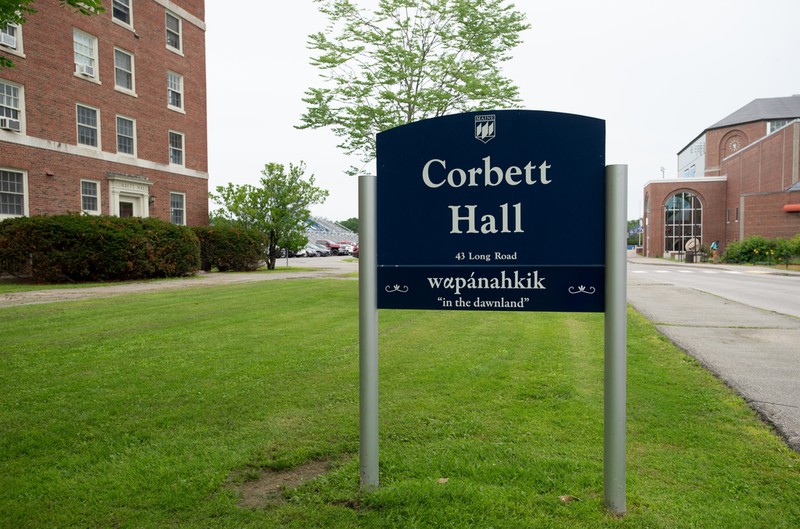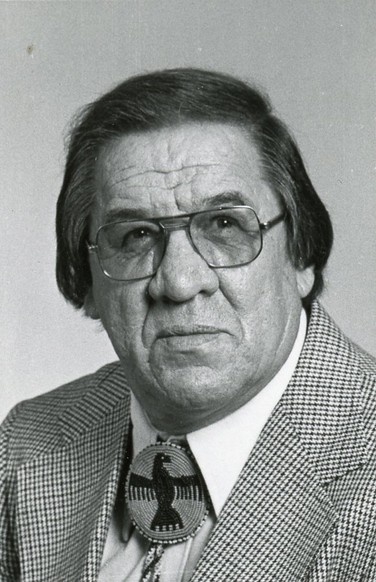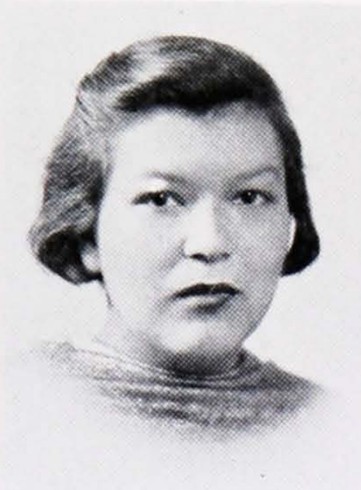Native American Studies in the Dawnland
Introduction
Text-to-speech Audio
Images
New Penobscot language sign for Corbett Hall and the Wabanaki Center

Dr. Theodore N. Mitchell

Eunice Nelson, first known Penobscot graduate of UMaine

Eunice Nelson Baumann in later years

Backstory and Context
Text-to-speech Audio
Wabanaki students and educators have long made an impact on campus. One of the first known Native American students was a Penobscot woman named Eunice Nelson, who graduated in 1939, going on to earn an MA and PhD from NYU. She made her mark as a noted anthropologist, the author of The Wabanaki: An Annotated Bibliography, and the head librarian at The Museum of the American Indian before returning to teach at UMaine.
Dr. Theodore (Ted) N. Mitchell, also a member of the Penobscot Nation, started at UMaine in 1938 and attended for a few years, but dropped out to start his family, which eventually grew to 14 children. Ted continued his studies on and off over the years as he found time, while working construction on campus buildings like the Memorial gym and Hilltop dorms.
His efforts paid off. After finishing his Masters, he became a guidance counselor at the Indian Island School, the first non-nun or priest to work for the church run school in an academic capacity. In 1974, at 52 years old, he was hired as an academic advisor for UMaine’s Onward Program, which assists non-traditional students like himself, juggling work and home life on top of studies. He continued on as the Associate Dean of Minority Student Affairs, where he fought for many years to establish the Wabanaki Center (1995), Native American Studies program (1997), and the Native American Tuition Waiver and Scholarship Program. Each serve as models for higher ed institutions elsewhere, and help promote, support and provide educational opportunities for and about Wabanaki peoples across the State of Maine and beyond.
Sources
Mitchell, John Bear, Speech Honoring Ted Mitchell. Unknown date circa 2010.
Sieber, Karen "Interview with grandson John Bear Mitchell." March 2021.
Special Collections, Raymond H. Fogler Library, University of Maine, "Baumann (Eunice Nelson) Papers, 1949-1976" (2015). Finding Aids. Number 192.
Bangor Daily News
University of Maine Photo Archives
Prism yearbook, 1939
University of Maine Photo Archives
